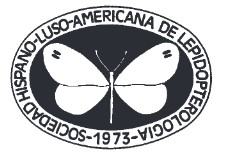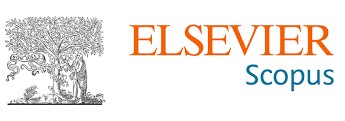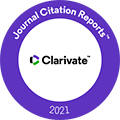Dificultad de las larvas de Parnassius mnemosyne (Linnaeus, 1758), selección de hábitat, determinación y ratio sexual (Lepidoptera: Papilionidae)
DOI:
https://doi.org/10.57065/shilap.876Palabras clave:
Lepidoptera, Papilionidae, habitat, determinación sexo, ratio sexual, República ChecaResumen
Parnassius mnemosyne (Linnaeus, 1758) es una carismática especie cuyos números están en declive regional. Es notable por su sobrerrepresentación de machos en estudios de marca y recaptura, al igual que la dificultad en detectar sus larvas, quienes se desarrollan en plantas efímeras primaverales (especies de Corydalis). Para estudiar si el sesgo hacia la sobrerrepresentación de machos es evidente en la etapa larval, buscamos larvas en tres localidades en la República Checa, e intentamos determinar el sexo de las larvas usando dos métodos distintos: identificación de la cromatina sexual específica de las hembras, formada por copias múltiples del cromosoma W en el núcleo somático de células poliploides de los túbulos de Malpighian; y disecciones de ovarios y testículos. Encontrar larvas en el campo fue extremadamente difícil; 38 días-hombre de trabajo de campo cedieron a penas 78 larvas. De acuerdo con la literatura, las larvas habitan bajo pabellones escasos de encinales maduros o al margen del bosque. Determinación sexual por disección fue eficiente (N = 22) y demostró alta prevalencia de hembras (16 vs. 6). Nos resultó imposible la identificación de la cromatina sexual (N = 56). Análisis citogenético confirmo el número haploide de cromosomas n = 29, uno menos que el congénere Parnassius apollo (Linnaeus, 1758). Esta reducción de cromosomas se debe a una fusión de los cromosomas sexuales con un par de autosomas, una situación bastante inusual en Lepidóptera. La sobrerrepresentación femenina de las larvas, se basa en 22 muestras, y contrasta con la sobrerrepresentación reportada en adultos, esta puede ser resultado de una tasa de desarrollo más rápida en los machos.
Descargas
Estadísticas globales ℹ️
|
293
Visualizaciones
|
189
Descargas
|
|
482
Total
|
|
Citas
ADAMSKI, P., 2004.– Sex ratio of apollo butterfly Parnassius apollo (Lepidoptera: Papilionidae)-facts and artifacts.– European Journal of Entomology, 101: 341-344. DOI: https://doi.org/10.14411/eje.2004.046
AUCKLAND, J. N., DEBINSKI, D. M. & CLARK, W. R., 2004.– Survival, movement, and resource use of the butterfly Parnassius clodius.– Ecological Entomology, 29: 139-149. DOI: https://doi.org/10.1111/j.0307-6946.2004.00581.x
BENES, J., KONVIGKA, M., DVORˇ ÁK, J., FRIC, Z., HAVELDA, Z., PAVLÍGKO, A., VRABEC, V. & WEIDENHOFFER, Z., 2002.– Butterflies of the Czech Republic: Distribution and conservation I., II: 857 pp.
SOM, Prague.
BROMMER, J. E. & FRED, M. S., 1999.– Movement of the Apollo butterfly Parnassius apollo related to host plant and nectar plant patches.– Ecological Entomology, 24: 125-131. DOI: https://doi.org/10.1046/j.1365-2311.1999.00190.x
EHRLICH, P. R., LAUNER, A. E. & MURPHY, D. D., 1984.– Can sex ratio be defined or determined? The case of a population of checkerspot butterflies.– The American Naturalist 124: 527-539. DOI: https://doi.org/10.1086/284292
EMMEL, T. C., ELIAZAR, P. J., BROWN, K. S. Jr. & SUOMALAINEN, E., 1995.– Chromosome evolution in the Papilionidae.– In J. M. SCRIBER, Y. TSUBAKI & R. C. LEDERHOUSE (eds). Swallowtail Butterflies: Their Ecology and Evolutionary Biology: 283-298. Scientific Publishers.
FEDERLEY, H., 1938.– Chromosomenzahlen finnländischer Lepidopteren I. Rhopalocera.– Hereditas 24: 397-464. DOI: https://doi.org/10.1111/j.1601-5223.1938.tb03219.x
FUKOVÁ, I., NEVEN, L. G., BÁRCENAS, N. M., GUND, N. A., DALÍKOVÁ, M. & MAREC, F., 2009.– Rapid assessment of the sex of codling moth Cydia pomonella (Linnaeus) (Lepidoptera: Tortricidae) eggs and larvae.– Journal of Applied Entomology, 133: 249-261. DOI: https://doi.org/10.1111/j.1439-0418.2008.01352.x
GÄRDENFORS, U., 2015.– The 2015 red list of Swedish species. ArtDatabanken, Uppsala.
HEJNX, S. & SLAVÍK, B., 1997.– Kveˇtena Geské Republiky, 1: 557 pp. Academia, Praha.
KONVIGKA, M. & KURAS, T., 1999.– Population structure, behaviour and selection of oviposition sites of an endangered butterfly, Parnassius mnemosyne, in Litovelské Pomoraví, Czech Republic.– Journal of Insect Conservation, 3: 211-223.
KONVIGKA, M., DUCHOSLAV, M., HARASTOVÁ, M., BENES, J., FOLDXNOVÁ, S., JIRKU, M. & KURAS, T., 2001.– Habitat utilization and behaviour of adult Parnassius mnemosyne (Lepidoptera: Papilionidae) in the Litovelské Pomoraví, Czech Republic.– Nota lepidopterologica, 25: 39-51.
KUDRNA, O. & SEUFERT, W., 1991.– Öekologie und Schutz von Parnassius mnemosyne (LINNAEUS, 1758) in der Rhön.– Oedippus, 2: 1-44.
KUUSSAARI, M., SACCHERI, I., CAMARA, M. & HANSKI, I., 1998.– Allee effect and population dynamics in the Glanville fritillary butterfly.– Oikos 82: 384-392. DOI: https://doi.org/10.2307/3546980
KUUSSAARI, M., HEIKKINEN, R. K., HELIÖLÄ, J., LUOTO, M., MAYER, M., RYTTERI, S. & VON BAGH, P., 2015.– Successful translocation of the threatened Clouded Apollo butterfly (Parnassius mnemosyne) and metapopulation establishment in southern Finland.– Biological Conservation, 190: 51-59. DOI: https://doi.org/10.1016/j.biocon.2015.05.011
LUOTO, M., KUUSSAARI, M., RITA, H., SALMINEN, J. & VON BONSDORFF, T., 2001.– Determinants of distribution and abundance in the clouded apollo butterfly: a landscape ecological approach.– Ecography, 24: 601-617. DOI: https://doi.org/10.1034/j.1600-0587.2001.d01-215.x
MAREC, F. & TRAUT, W., 1994.– Sex chromosome pairing and sex chromatin bodies in W-Z translocation strains of Ephestia kuehniella (Lepidoptera).– Genome, 37: 426-435. DOI: https://doi.org/10.1139/g94-060
MATSUMOTO, K., 1985.– Population dynamics of the Japanese clouded apollo Parnassius glacialis Butler (Lepidoptera: Papilionidae). I. Changes in population size and related population parameters for three successive generations.– Research Population Ecology, 27: 301-312. DOI: https://doi.org/10.1007/BF02515468
MEDIOUNI, J., FUKOVÁ, I., FRYDRYCHOVÁ, R., DHOUBI, M. H. & MAREC, F., 2004.– Karyotype, sex chromatin and sex chromosome differentiation in the carob moth, Ectomyelois ceratoniae (Lepidoptera: Pyralidae).– Caryologia, 57: 184-194. DOI: https://doi.org/10.1080/00087114.2004.10589391
MEGLÉCZ, E., NEVE, G., PECSENYE, K. & VARGA, Z., 1999.– Genetic variations in space and time in Parnassius mnemosyne (L.) (Lepidoptera) populations in north-east Hungary: implications for conservation.– Biological Conservation, 89: 251-259. DOI: https://doi.org/10.1016/S0006-3207(99)00006-3
MICHEL, F., REBOURG, C., COSSON, E. & DESCIMON, H., 2008.– Molecular phylogeny of Parnassiinae butterflies (Lepidoptera: Papilionidae) based on the sequences of four mitochondrial DNA segments.– Annales de la Société entomologique de France, 44: 1-36. DOI: https://doi.org/10.1080/00379271.2008.10697541
NGUYEN, P. & CARABAJAL PALADINO, L., 2016.– On the neo-sex chromosomes of Lepidoptera.– In Evolutionary Biology: 171-185. Springer International Publishing, Cham. DOI: https://doi.org/10.1007/978-3-319-41324-2_11
NGUYEN, P., SXKOROVÁ, M., SÍCHOVÁ, J., KUTA, V., DALÍKOVÁ, M., GAPKOVÁ FRYDRYCHOVÁ, R., NEVEN, L. G., SAHARA, K. & MAREC, F., 2013.– Neo-sex chromosomes and adaptive potential in tortricid pests.– Proceedings of the National Academy of Sciences of the United States of America, 110: 6931-6936. DOI: https://doi.org/10.1073/pnas.1220372110
ROBINSON, R., 1971.– Lepidoptera Genetics: 687 pp. Pergamon Press, Oxford.
ROLAND, J., KEYGHOBADI, N., FOWNES, S., 2000.– Alpine Parnassius butterfly dispersal: effects of landscape and population size.– Ecology, 81: 1642-1653. DOI: https://doi.org/10.1890/0012-9658(2000)081[1642:APBDEO]2.0.CO;2
SCOTT, J. A., 1973.– Population biology and adult behaviour of the circumpolar butterfly, Parnassius phoebus F. (Papilionidae).– Entomologica Scandinavica, 4: 161-168. DOI: https://doi.org/10.1163/1876312X74X00010
SEBEK, P., BAGE, R., BARTOS, M., BENES, J., CHLUMSKÁ, Z., DOLEZAL, J., DVORSKX, M., KOVÁRˇ, J., MACHAG, O., MIKÁTOVÁ, B., PERLIK, M., PLATEK, M., POLÁKOVÁ, S., SKORPÍK, M., STEJSKAL, R., SVOBODA, M., TRNKA, F., VLASÍN, M., ZAPLETAL, M., GÍZEK, L., 2015.– Does a minimal
intervention approach threaten the biodiversity of protected areas? A multi-taxa short-term response to intervention in temperate oak-dominated forests.– Forest Ecology and Management, 358: 80-89. DOI: https://doi.org/10.1016/j.foreco.2015.09.008
SÍCHOVÁ, J., NGUYEN, P., DALÍKOVÁ, M. & MAREC, F., 2013.– Chromosomal evolution in tortricid moths: conserved karyotypes with diverged features.– PLoS ONE, 8: e64520. DOI: https://doi.org/10.1371/journal.pone.0064520
SLANCAROVA, J., VRBA, P., PLATEK, M., ZAPLETAL, M., SPITZER, L. & KONVIGKA, M., 2015.– Cooccurrence of three Aristolochia-feeding Papilionids (Archon apollinus, Zerynthia polyxena and Zerynthia cerisy) in Greek Thrace.– Journal of Natural History, 49: 1825-1848. DOI: https://doi.org/10.1080/00222933.2015.1006281
STOKS, R., 2001.– What causes male-biased sex ratios in mature damselfly populations?.– Ecological Entomology, 26: 188-197. DOI: https://doi.org/10.1046/j.1365-2311.2001.00303.x
STOLLE, J., 2004.– Biological flora of Central Europe: Corydalis pumila (Host) Rchb.– Flora-Morphology, Distribution, Functional Ecology of Plants, 199: 204-217. DOI: https://doi.org/10.1078/0367-2530-00148
TRAUT, W. & MAREC, F., 1996.– Sex chromatin in Lepidoptera.– The Quarterly Review of Biology, 71: 239-256. DOI: https://doi.org/10.1086/419371
TRAUT, W., SAHARA, K. & MAREC, F., 2007.– Sex chromosomes and sex determination in Lepidoptera.– Sexual Development, 1: 332-346. DOI: https://doi.org/10.1159/000111765
TRAUT, W., WEITH, A. & TRAUT, G., 1986.– Structural mutants of the W chromosome in Ephestia (Insecta, Lepidoptera).– Genetica, 70: 69-79. DOI: https://doi.org/10.1007/BF00123216
VÄISÄNEN, R. & SOMERMA, P., 1985.– The status of Parnassius mnemosyne (Lepidoptera, Papilionidae) in Finland.– Notulae Entomologicae, 65: 109-118.
VALIMAKI, P. & ITAMIES, J., 2005.– Effects of canopy coverage on the immature stages of the clouded Apollo butterfly [Parnassius mnemosyne (L.)] with observations on larval behaviour.– Entomologica Fennica, 16: 117-123. DOI: https://doi.org/10.33338/ef.84244
VAN SWAAY, C. A. M. & WARREN, M. S., 1999.– Red Data Book of European Butterflies (Rhopalocera), Nature and Environment. Council of Europe Publishing, Strasbourg.
VLASÁNEK, P., HAUCK, D. & KONVIGKA, M., 2009.– Adult sex ratio in the Parnassius mnemosyne butterfly: Effects of survival, migration, and weather.– Israel Journal of Ecology & Evolution, 55: 233-252. DOI: https://doi.org/10.1560/IJEE.55.3.233
VLASÁNEK, P. & KONVIGKA, M., 2009.– Sphragis in Parnassius mnemosyne: male-derived insemination plugs loose efficiency with progress of female flight (Lepidoptera: Papilionidae).– Biologia, 64: 1206-1211. DOI: https://doi.org/10.2478/s11756-009-0207-3
YOSHIDO, A., SAHARA, K. & YASUKOCHI, Y., 2014.– Silk moths (Lepidoptera).– In I. V. SHARAKHOV (ed.). Protocols for Cytogenetic Mapping of Arthropod Genomes: 219-256. CRC Press, Boca Raton. DOI: https://doi.org/10.1201/b17450-7
YOSHIDO, A., MAREC, F. & SAHARA, K., 2016.– The fate of W chromosomes in hybrids between wild silkmoths, Samia cynthia ssp.: no role in sex determination and reproduction.– Heredity, 116: 424-433. DOI: https://doi.org/10.1038/hdy.2015.110
Publicado
Cómo citar
Número
Sección
Licencia
Derechos de autor 2017 P. Vlasánek, A. Bartonová, F. Marec, M. Konvicka

Esta obra está bajo una licencia internacional Creative Commons Atribución 4.0.
El autor retiene sus derechos de marca y patente sobre cualquier proceso o procedimiento dentro del artículo.
El autor retiene el derecho de compartir, distribuir, ejecutar y comunicar públicamente el artículo publicado en SHILAP Revista de lepidopterología, con reconocimiento inicial de su publicación en SHILAP Revista de lepidopterología.
El autor retiene el derecho para hacer una posterior publicación de su trabajo, de utilizar el artículo a publicarlo en un libro, siempre que indique su publicación inicial en SHILAP Revista de lepidopterología.
Cada envío a SHILAP Revista de lepidopterología debe ir acompañado de una aceptación de los derechos de autor y del reconocimiento de autoría. Al aceptarlos, los autores conservan los derechos de autor de su trabajo y aceptan que el artículo, si es aceptado para su publicación por SHILAP Revista de lepidopterología, tendrá una licencia de uso y distribución “Reconocimiento 4.0 Internacional de Creative Commons” (CC BY 4.0), que permite a terceros compartir y adaptar el contenido para cualquier propósito dando el crédito apropiado al trabajo original.
Puede consultar desde aquí la versión informativa y el texto legal de la licencia. La indicación de la licencia CC BY 4.0 debe indicarse expresamente de esta manera cuando sea necesario.
A partir de 2022, el contenido de la versión impresa y digital se encuentra bajo una licencia de uso y distribución “Reconocimiento 4.0 Internacional de Creative Commons” (CC BY 4.0), que permite a terceros compartir y adaptar el contenido para cualquier propósito dando el crédito apropiado al trabajo original.
El contenido anterior de la revista se publicó bajo una licencia tradicional de derechos de autor; sin embargo, el archivo está disponible para acceso gratuito.
Al usar el contenido de SHILAP Revista de lepidopterología publicado antes del año 2022, incluidas figuras, tablas o cualquier otro material en formato impreso o electrónico pertenecen a los autores de los artículos, los autores deben obtener el permiso del titular de los derechos de autor. Las responsabilidades legales, financieras y penales a este respecto pertenecen al autor(es).
En aplicación del Principio de Prioridad del Código Internacional de Nomenclatura Zoologica, no se autoriza el depósito en repositorios, páginas web personales o similares de cualquier otra versión distinta a la publicada por el editor.




























